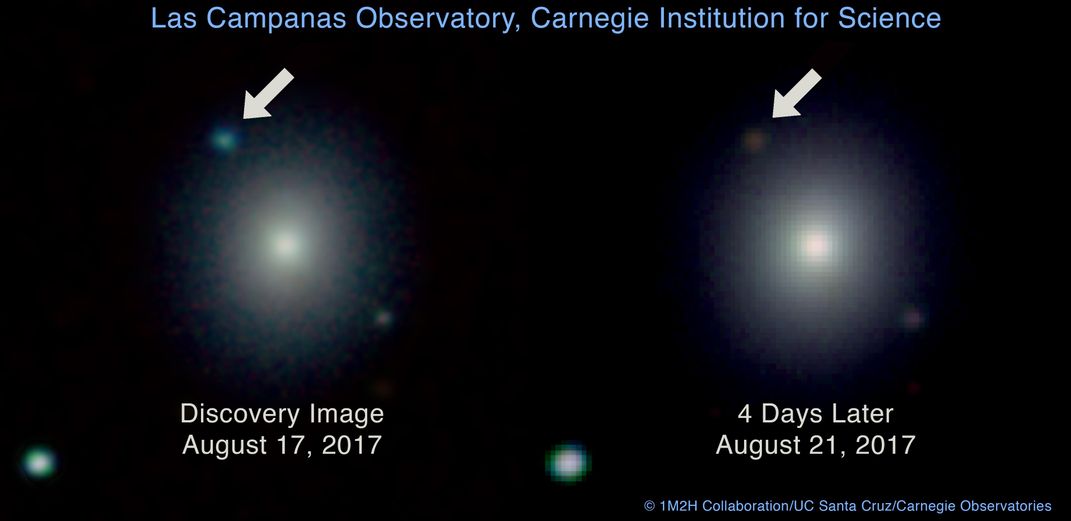Gravitational Wave Astronomy Just Became a Team Sport
Observatories followed a ripple in space-time to its source
/https://tf-cmsv2-smithsonianmag-media.s3.amazonaws.com/filer/b6/44/b644f6a7-077b-49d6-8040-656ca5b0a6b5/neutron-merger.jpg)
Gravitational wave astronomy now has eyes on the universe. Today scientists revealed the first visual observation of a gravitational wave source: two neutron stars colliding.
It was just over a year ago that astronomers at LIGO—the Laser Interferometer Gravitational-wave Observatories—announced the first ever detection of these ripples in space-time, a discovery that was honored with the Nobel Prize in Physics a few weeks ago. Those waves originated from two black holes colliding in a massively energetic event that was otherwise invisible to us, because it didn’t emit light. Neutron stars do, however. So when scientists at LIGO detected the ripples on August 17, the team immediately sent out alerts to observing teams around the world, who immediately pointed their telescopes at the source. Astronomers at the Carnegie Institution at the University of California at Santa Cruz, using a telescope at Las Campanas Observatory in Chile, were the first to see the bright blue light—debris from the neutron star merger. Hundreds of telescopes on the ground and in space then followed up with their own observations.
Over a period of several weeks, spectroscopic observations also were able to further confirm an observation first made in 2013: that colliding neutron stars—the superdense remnants of supernovas—are the universe’s source of the heaviest elements, including gold. In that 2013 incident, NASA’s Swift telescope detected a gamma-ray burst and alerted teams using the Hubble Space Telescope and several ground telescopes to look at its source. The lead astronomer, Edo Berger of the Harvard-Smithsonian Center for Astrophysics, said they estimated that the collision produced as much as “10 moon masses” of gold.
Gravitational wave detection has rightly been called a new era of astronomy. But perhaps more exciting is how quickly it developed into a team sport. When observatories and their multitude of detectors, observing across the entire electromagnetic spectrum, can work successfully together to study an object that in some cases only appears for microseconds, that’s when our knowledge of the universe will likely take leaps forward.
